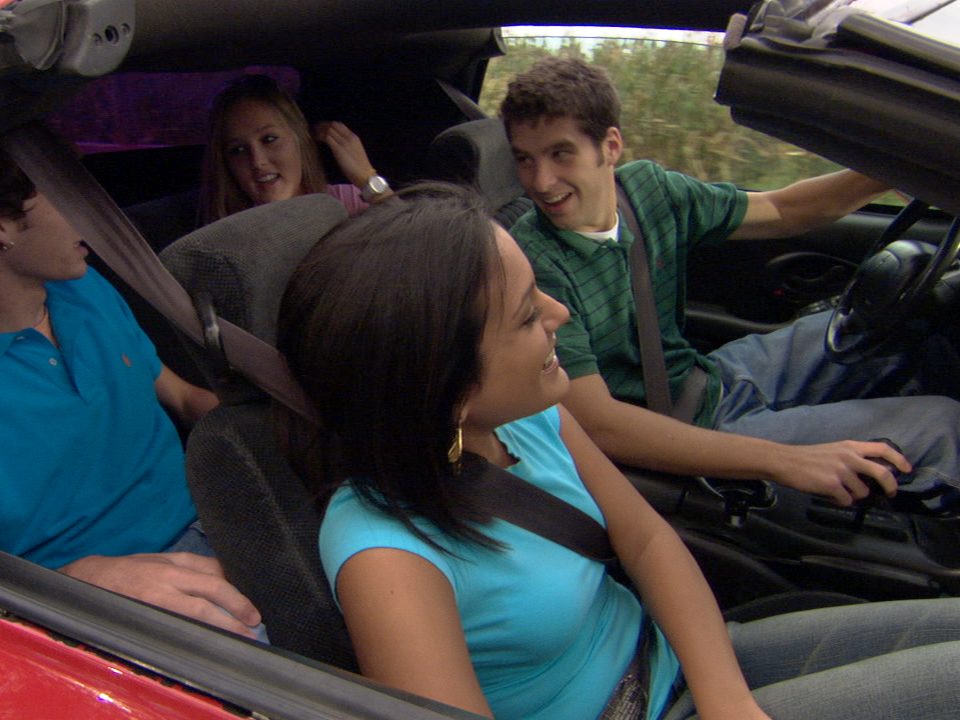- WE SAVE LIVES
- info@wesavelives.org
GRADUATED DRIVER LICENSING (GDL)
We Save Lives, National Road Safety Foundation and Impact Teen Drivers Launch ‘100 Safest Days of Summer’ Campaign to Save Teen Lives
May 23, 2024
Hailey Brooks
June 22, 2024by Jim Fell
To address the young driver problem, traffic safety officials from several organizations developed a licensing system that prolongs the learning process for beginning drivers and restricts their driving to less risky conditions. GDL systems are an entry-level licensing program in the United States that give young beginning drivers more time to learn the complex skills required to drive a motor vehicle safely. GDL laws now exist in all 50 states and DC.
These laws generally require three-staged licensing for novice drivers:
- a learner’s permit for some period where the teen must practice driving with a licensed driver aged 21 or older;
- an intermediate or provisional stage where the teen can drive solo, but only under certain conditions (e.g., provisions in most states restrict late-night driving and the number of teen passengers allowed in the car); and finally
- a full license with no restrictions (in some states, at the minimum age of 18).
Studies of GDL systems in the states have indicated they help reduce the crash rates of young drivers.
The Insurance Institute for Highway Safety (www.iihs.org) has rated GDL systems in the states using criteria that represent their strength and potential effectiveness in reducing fatal and serious injuries. According to the IIHS, the key components of GDL laws in the states are:
- the minimum entry age (1 point for learner’s entry age 16 or older);
- mandatory holding period (2 points for 6 months; 1 point for 3-5 months; none for less than 3 months);
- minimum amount of supervised driving (1 point for 30 hours or more; none for less than 30 hours);
- minimum age for the intermediate or provisional license stage (recommended to be 17);
- night driving restriction (2 points for 9 or 10 pm; 1 point for after 10 pm);
- passenger limitation (2 points for 1 or 0 underage passengers; 1 point for 2 passengers; none for 3 passengers; and
- age of full licensure when night and passenger restrictions are lifted (recommended to be 18) (www.iihs.org).
“Good” systems score 6 or more points; “Fair” systems score 4 or 5; and “Marginal” systems, 2 or 3. Check out your state’s GDL law and see how they score. The better the score, the more effective the GDL system in reducing crashes. An on-line calculator (iihs.org/gdl) shows the benefits of strengthening these provisions.
Many national studies of the effectiveness of GDL systems have been conducted and most show they reduce teen driver crash rates. One national study showed that GDL laws rated as “Good” by the IIHS had a 30% lower fatal crash rate for 15- to 17-year-old drivers compared to GDL laws rated as “Poor.”
Below are the GDL minimum age requirements for certain states:
|
Adopting minimum age requirements in GDL laws |
|||
| State |
Age |
Date |
|
|
Years |
Months |
||
|
Recent adoption of a minimum age |
|||
| AZ |
15 |
6 |
06-30-08 |
| CA |
15 |
6 |
01-01-03 |
| CO |
15 |
07-01-99 |
|
| DE |
16 |
08-31-06 |
|
| HI |
15 |
6 |
01-01-01 |
| ID |
14 |
6 |
01-01-01 |
| IN |
15 |
07-01-11 |
|
| MI |
14 |
9 |
04-01-97 |
| MO |
15 |
01-01-01 |
|
| OH |
15 |
6 |
07-01-98 |
| UT |
15 |
08-01-06 |
|
| VA |
15 |
6 |
07-01-01 |
|
Minimum age requirements for the intermediate stage of GDL |
|||
| CT |
16 |
4 |
01-01-97 |
| DE |
16 |
6 |
08-31-06 |
| DC |
16 |
6 |
01-01-01 |
| HI |
16 |
01-09-06 |
|
| IN |
16 |
6 |
07-01-10 |
| KY |
16 |
6 |
10-01-96 |
| LA |
16 |
01-01-98 |
|
| MD |
16 |
6 |
10-01-09 |
| MS |
16 |
07-01-09 |
|
| NV |
16 |
10-01-05 |
|
| NM |
15 |
6 |
01-01-00 |
| NY |
16 |
6 |
09-01-03 |
| PA |
16 |
6 |
12-22-99 |
| RI |
16 |
6 |
01-01-99 |
| SC |
15 |
6 |
03-05-02 |
| SD |
14 |
6 |
01-01-99 |
| VA |
16 |
3 |
07-01-01 |
The effects of certain components of GDL laws have been evaluated by the Pacific Institute for Research and Evaluation (www.pire.org). The findings are shown below:
Graduated Driver Licensing Effectiveness: Reductions in 16-17 year old drivers in fatal crashes
(Sources: Data for first pair of bars from Fell, Jones, Romano, & Voas, 2011; second pair of bars from Fell, Todd, & Voas, 2011; last bar from Fell, Todd, & Voas, 2011)
There is a “Checkpoints” program in some states which uses a parent-teen driving agreement to encourage parents to stay involved throughout the licensing process and to limit their teens’ driving under high risk situations (e.g., late night; carload of teens; talking/texting on cell phone). Studies show that “Checkpoints” increased parents’ limit-setting and reduced teens’ reported risky driving and traffic citations. See if your state has a “Checkpoints” program.





